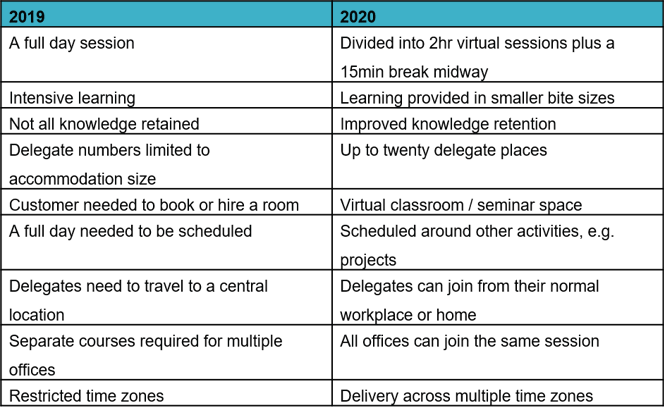Cracks in the System
Cybersecurity threats don’t always kick the door down—sometimes, they slip in through the cracks. This month, we’re spotlighting three subtle but serious security risks that could be undermining your defences right now.

2020 will always be recorded within history as a very significant year for humanity as the COVID-19 global pandemic directly impacted every part of society and challenged what went before.

If we consider business and delivery of our projects, we all had to adapt to remote working, transition from face to face meetings to online video conferences and focused far more on the health and wellness of all our colleagues and friends. For me personally, I saw so much compassion, understanding and consideration within those online meetings. It was okay if someone had to disappear briefly to answer a door or focus on a child who desperately needed their mum or dad, and we can all laugh and relate to those now so common phrases
“Can you hear me?”, “Can you hear me now?” or “Can you see my slides?”.
There was also a shift in learning. Our BIM Fundamentals and Management courses have always been popular since their introduction in 2013, and 2019 was no different, the interest in the new ISO 19650 series provided new content, perspectives and learning opportunities for our customers. The courses had always been delivered onsite in customers offices, at local venues such as hotels, or at our training centres, but as we moved into the latter parts of 2019, we started to provide more and more services internationally and predominantly virtually.
So, when we were forced early in 2020 to think of new ways to continue to deliver services, our BIM and ISO 19650 Management course offerings had a good foundation. I also personally had no issues as a facilitator and educator moving to online delivery, I was very confident moving forward that the new formats would work. However, it would be very amiss and unprofessional not to evaluate the change, the customer experience, apply any lessons learned and look for continuous improvement. Of course, that is exactly what we did.
When delivering education virtually we needed to consider the comfort of all delegates and their facilitator, so we quickly concluded that two hours of education plus a fifteen-minute break midway was the perfect length of time. The move away from delivering full day courses did mean the equivalent virtual course had to be delivered over three mornings or afternoons. The feedback from customers was that they loved it, it was convenient, they did not lose a full day away from projects, and knowledge retention was vastly improved. This was because learning was provided over several sessions and not compressed within a single day, plus they had opportunities to use their new skills right away.
We also had to consider the customer experience and technologies, whether delivery was via Microsoft Teams, WebEx, or another platform. These courses are facilitated, not pre-recorded, and therefore we always encourage conversation, debate, and questions. It is this part that makes the experience and drives engagement. We concluded that twenty delegates were a manageable number, and this has proven to be a good decision and number to facilitate and support. To enrich the experience, the use of other functions such as online polls, quizzes and whiteboards are being tested because virtual engagements are likely to be our preferred method of delivery moving forward.
Of course, we still may hear:
“Can you hear me?”, “Unmute, you still have mute on.”
The following table shows the shift of BIM Management Education from 2019 to 2020.
The move from face to face seminars or classroom sessions to virtual has been a resounding success for BIM Management education, and there have been far more positives than negatives. For me personally, virtual facilitated courses with lots of delegates, and good open questions and conversation will be my new normal moving forward.
Cybersecurity threats don’t always kick the door down—sometimes, they slip in through the cracks. This month, we’re spotlighting three subtle but serious security risks that could be undermining your defences right now.
As 2025 comes to a close, we’re looking back at some of the most impactful cyber threats of the year and more importantly, what they reveal about the challenges ahead. From ransomware tactics to AI-driven phishing and risky app integrations, this round-up highlights where businesses have been most vulnerable and how you can strengthen your defences in 2026.
Learn what Product Lifecycle Management (PLM) is and how it helps teams manage product data, processes, and collaboration across the lifecycle. Discover the key benefits and PLM tools driving innovation.
